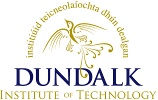Craven, M. and Sergeant, Gerard P. and Hollywood, Mark A. and McHale, Noel G. and Thornbury, Keith D. (2004) Modulation of spontaneous Ca2+-activated Cl- currents in the rabbit corpus cavernosum by the nitric oxide-cGMP pathway. J Physiol. , 556 (2). pp. 495-506.
Preview |
PDF
- Published Version
Download (306kB) | Preview |
Abstract
The whole-cell perforated patch clamp technique was used to study membrane currents in isolated rabbit corpus cavernosum smooth muscle cells. Depolarization from -80 mV to the range -40 to -10 mV evoked a nifedipine-sensitive Ca(2+) current that was followed by a slower inward current that activated over several hundred milliseconds. The slow current reversed near the Cl(-) equilibrium potential (E(Cl)) and was reduced by anthracene-9-carboxylic acid (A9C; 1 mm) and niflumic acid (100 microm), suggesting that it was a Ca(2+)-activated Cl(-) current. When held constantly at -60 mV, over 70% of cells fired spontaneous transient inward currents (STICs), the amplitudes of which were reduced by A9C and niflumic acid. STICs reversed near E(Cl) in a symmetrical Cl(-) gradient and when [Cl(-)](o) was substituted with glutamate or I(-), the reversal potential shifted to more positive or more negative values, respectively, confirming that STICs were mediated by Cl(-) channels. STICS were also blocked by cyclopiazonic acid, 2-aminoethoxydiphenyl borate (2-APB) and 2-nitro-4-carboxyl-N,N-diphenylcarbamate (NCDC), suggesting that they depended on IP(3)-mediated Ca(2+)-release from the sarcoplasmic reticulum. Modulation by the NO-cGMP pathway was investigated by applying nitrosocysteine, 3-(5-hydroxymethyl-2-furyl)-1-benzyl indazole (YC-1), and 8-bromo cGMP, all three of which abolished STIC activity. YC-1 also reduced noradrenaline-evoked inward currents, but had no effect on similar currents evoked by caffeine, suggesting that cGMP selectively inhibited IP(3)-mediated Ca(2+) release. We propose that Ca(2+)-activated Cl(-) currents underlie detumescent tone in the corpus cavernosum, and that modulation of this mechanism by the NO-cGMP pathway is important during penile erection.
| Item Type: | Article |
|---|---|
| Uncontrolled Keywords: | Animals; Calcium/metabolism; Chlorides/metabolism; Cyclic GMP/metabolism; Enzyme; Inhibitors/pharmacology; Indoles/pharmacology; Male Membrane Potentials/drug effects; Membrane; Potentials/physiology; Muscle, Smooth/physiology; Nitric Oxide/metabolism; Nitric Oxide Donors/pharmacology; Norepinephrine/pharmacology; Patch-Clamp Techniques; Penile Erection/physiology Penis/physiology; Rabbits Vasoconstrictor Agents/pharmacology |
| Subjects: | Science |
| Research Centres: | Smooth Muscle Research Centre |
| Depositing User: | Concepta Woods |
| Date Deposited: | 07 Mar 2012 11:10 |
| Last Modified: | 11 Nov 2014 16:10 |
| URI: | https://eprints.dkit.ie/id/eprint/192 |
Actions (login required)
 |
View Item |
Downloads
Downloads per month over past year

